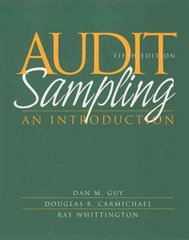




Brighton Services repairs locomotive engines. It employs 100 full-time workers at $20 per hour. Despite operating at capacity, last year's performance was a great disappointment to the managers. In total, 10 jobs were accepted and completed, incurring the following total costs. Direct materials Direct labor Manufacturing overhead $1,047,400 4,200,000 1,050,000 Of the $1,050,000 manufacturing overhead, 40 percent was variable overhead and 60 percent was fixed. This year, Brighton Services expects to operate at the same activity level as last year, and overhead costs and the wage rate are not expected to change. For the first quarter of this year, Brighton Services completed two jobs and was beginning the third (Job 103). The costs incurred follow. Job 101 102 103 Total manufacturing overhead Total marketing and administrative costs Direct Materials $ 138,400 105,000 95,200 Direct Labor $520,000 313,600 195,300 272,400 122,000 You are a consultant associated with Lodi Consultants, which Brighton Services has asked for help. Lodi's senior partner has examined Brighton Services's accounts and has decided to divide actual factory overhead by job into fixed and variable portions as follows. 101 102 103 Actual Manufacturing Overhead Variable Fixed $ 31,100 $ 105, 200 28,700 89,400 5,800 12,200 $ 65,600 $ 206,800 In the first quarter of this year, 40 percent of marketing and administrative cost was variable and 60 percent was fixed. You are told that Jobs 101 and 102 were sold for $890,000 and $574,000, respectively. All over- or underapplied overhead for the quarter is written off to Cost of Goods Sold. Required: a. Present in T-accounts the actual manufacturing cost flows for the three jobs in the first quarter of this year. b. Using last year's overhead costs and direct labor-hours as this year's estimate, calculate predetermined overhead rates per direct labor-hour for variable and fixed overhead. c. Present in T-accounts the normal manufacturing cost flows for the three jobs in the first quarter of this year. Use the overhead rates derived in requirement (b). d. Calculate operating profit (loss) for the first quarter of this year under actual and normal costing systems. Complete this question by entering your answers in the tabs below. Required A Required B Required C Required D Present in T-accounts the actual manufacturing cost flows for the three jobs in the first quarter of this year. Materials Inventory Wages Payable Beg. Bal. Beg. Bal. End. Bal. End. Bal. Variable Manufacturing Overhead Fixed Manufacturing Overhead End. Bal. End. Bal. Work-in-Process Inventory Finished Goods Inventory Beg. Bal. Beg. Bal. Cost of Goods Sold Complete this question by entering your answers in the tabs below. Required A Required B Required C Required D Using last year's overhead costs and direct labor-hours as this year's estimate, calculate predetermined overhead rates per direct labor-hour for variable and fixed overhead. (Round your answers to 2 decimal places.) Predetermined Overhead Rate (Per Direct Labor-Hour) Variable overhead rate Fixed overhead rate Required A Required B Required Required D Present in T-accounts the normal manufacturing cost flows for the three jobs in the first quarter of this year. Use the overhead rates derived in requirement (b). (Do not round intermediate calculations and Round your final answers to nearest whole dollar amounts.) Materials Inventory Wages Payable Beg. Bal. Beg. Bal. End. Bal. End. Bal. Variable Manufacturing Overhead Fixed Manufacturing Overhead End. Bal End. Bal. Work-in-Process Inventory Finished Goods Inventory Beg. Bal Beg. Bal Cost Goods Sold End. Bal. End. Bal. Cost of Goods Sold Under-or Overapplied Overhead Beg. Bal Beg. Bal. Finished Goods End. Bal. End. Bal Complete this question by entering your answers in the tabs below. Required A Required B Required C Required D Calculate operating profit (loss) for the first quarter of this year under actual and normal costing systems. (Round your final answers to nearest whole dollar amounts. Loss amounts should be indicated with a minus sign.) Actual Normal Operating profit (loss)











